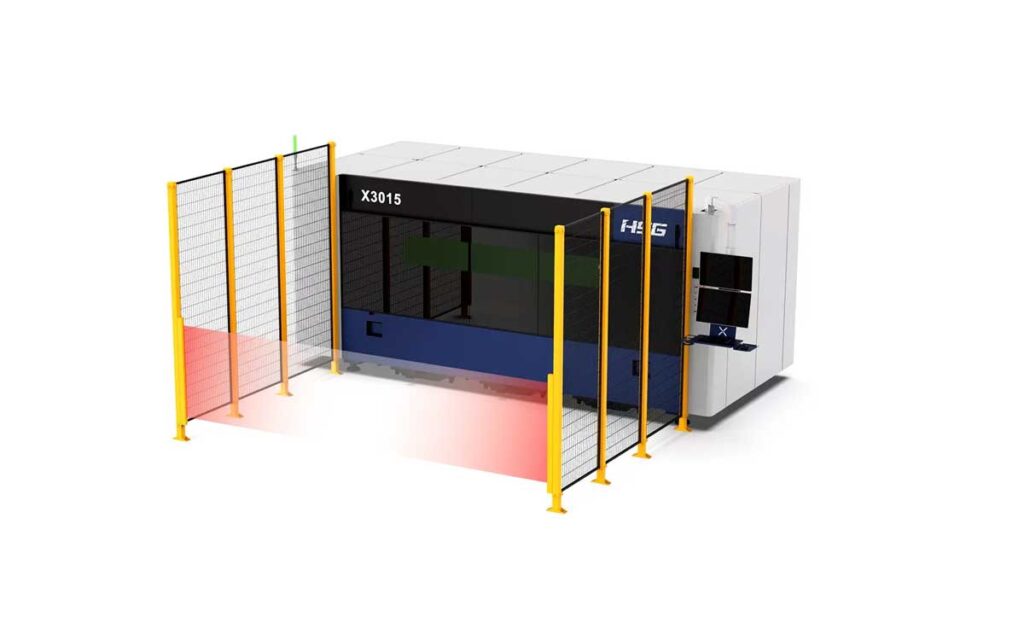The Science Behind Flat Laser Technology
At the core of flat laser technology is the principle of light amplification by stimulated emission of radiation (LASER). This process involves exciting atoms to emit light at specific wavelengths, which is then focused into a high-intensity beam. The flat laser’s beam is directed onto the metal surface, where it melts or vaporizes the material, creating a precise cut. The ability to control the laser’s intensity and focus allows for intricate designs and complex geometries to be executed with remarkable accuracy.
Additionally, flat lasers utilize advanced computer numerical control (CNC) systems to guide the laser beam with pinpoint precision. These systems are programmed with detailed design specifications, ensuring that each cut is executed exactly as intended. The integration of CNC technology with flat lasers not only enhances precision but also allows for greater flexibility in design, enabling manufacturers to tackle even the most challenging projects with ease.
One of the most significant advantages of flat lasers is their ability to produce high-quality cuts with minimal material waste. Traditional cutting methods often result in rough edges and require additional finishing processes, which can be time-consuming and costly. In contrast, flat lasers produce clean, smooth edges that often require little to no post-processing, saving both time and resources.
Another key benefit is the versatility of flat lasers. They can cut through a wide range of materials, including various types of metals, with ease. This versatility makes them an ideal choice for manufacturers who work with different materials and need a reliable cutting solution that can handle diverse projects. Furthermore, the non-contact nature of laser cutting reduces the risk of material deformation, ensuring that the integrity of the workpiece is maintained throughout the cutting process.
Flat lasers are particularly well-suited for cutting complex geometries in sheet metal due to their unparalleled precision and control. The focused laser beam can navigate intricate patterns and tight corners with ease, producing cuts that are both accurate and consistent. This level of precision is crucial for industries that require complex components with exacting specifications, such as aerospace and medical device manufacturing.
Moreover, the ability to program flat lasers with detailed design specifications means that even the most intricate designs can be replicated with high accuracy. This capability is especially valuable for manufacturers who need to produce large quantities of complex parts with consistent quality. By leveraging flat laser technology, these manufacturers can achieve the precision and repeatability needed to meet the demands of their customers and stay competitive in the market.
FAQ
What types of materials can flat lasers cut?
Flat lasers are highly versatile and can cut through a wide range of materials, including various metals such as steel, aluminum, and titanium.
How do flat lasers compare to traditional cutting methods in terms of speed?
Flat lasers operate at significantly higher speeds than traditional cutting methods, reducing production times and increasing overall efficiency.
Are there any limitations to using flat lasers for metal cutting?
While flat lasers are highly effective for most applications, they may not be suitable for extremely thick materials or certain types of composites. It’s important to consult with a specialist to determine the best cutting method for your specific needs.
What industries benefit the most from flat laser technology?
Industries that require high precision and complex geometries, such as aerospace, automotive, and medical device manufacturing, benefit greatly from flat laser technology.
Can flat lasers be used for both prototyping and mass production?
Yes, flat lasers are versatile enough to be used for both prototyping and mass production, offering consistent quality and precision across different scales of production.
How does the cost of flat laser cutting compare to other methods?
While the initial investment in flat laser technology can be higher, the long-term savings in material waste, production time, and post-processing make it a cost-effective solution.
What kind of maintenance do flat lasers require?
Flat lasers require regular maintenance to ensure optimal performance, including cleaning of the laser optics and periodic calibration. However, they generally have lower maintenance needs compared to traditional cutting equipment.
Flat lasers represent a significant advancement in metal cutting technology, offering unparalleled precision, efficiency, and versatility. Whether you’re dealing with complex geometries or high-volume production, flat lasers provide a reliable solution that can meet the most demanding requirements. If you’re looking to enhance your metal fabrication processes or need expert advice on the latest technology, I’m here to help. Don’t hesitate to reach out to me for personalized guidance.
Get Weekly Mac-Tech News & Updates






